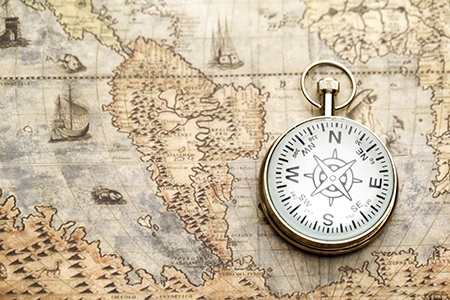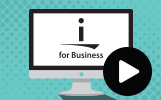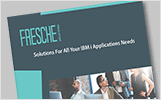Reducing operational costs: that’s the most obvious goal of any modernization project. But it should not be the only goal. A truly successful modernization project will align your IT goals with your business goals so that you create future value through new market generation, improved customer retention and more. Once this is understood, the process of selecting which technologies and tactics are right for your business can begin.
Your company is unique. And because it is unlike any other this is no one size or option that fits all. That’s a good thing, though, because you don’t want to be like everyone else, your differentiation is what make you unique. You want a customizable, flexible, evolutionary solution that offers incremental modernization to reduce risk and demonstrate results. A project that typically involves the following:
- Re-hosting legacy applications by shifting applications from a legacy environment such as a mainframe to Windows or UNIX in order to reduce legacy hardware and software costs.
- Wrapping legacy applications with SOA interfaces.
- Automated migration of legacy data and applications; transforming application code developed in legacy to Java or .NET
- COTS (Commercial off the Shelf); replacing legacy applications with new packaged applications such as SAP, PeopleSoft and Seibel.
- Re-architecting legacy applications; extracting the business assets from legacy applications and transforming them on to a modern architecture using modern tools and development platforms.
In order to begin the process, though, you need the expertise. The ability to identify both business and IT opportunities and concerns, prioritize and identify the right modernization tools. That’s where Fresche comes in.
THE MODERNIZATION ROADMAP
 Many IT departments find they require some assistance when building the business case for a modernization project. They have thought out reasoning behind why they need an initiative, and the probable benefits of modernization but they struggle with analysis of the different technical options that are available. More importantly, they need help compiling material in order to present an effective business case to senior management in order to secure funding.
Many IT departments find they require some assistance when building the business case for a modernization project. They have thought out reasoning behind why they need an initiative, and the probable benefits of modernization but they struggle with analysis of the different technical options that are available. More importantly, they need help compiling material in order to present an effective business case to senior management in order to secure funding.
This is a perfect opportunity to put the Fresche Modernization Roadmap in to action. Containing the goals, strategies, costs and timelines for completing a modernization project, the Roadmap is a living document that is updated as portions are completed or priorities change.
A typical Roadmap should have a number of projects, both short-term and long-term, that support the business goals of the company.
A Roadmap should start by establishing consensus between business executives, partners, IT executives and support staff over the vision, goals, budget and timelines for modernization. Essentially, these key questions should be asked, and answered:
- Where does the business need to be in six months? Two years? Five years?
- What are the major challenges users of the applications have today?
- What risks does the current legacy technology present to the business?
- What are the challenges of supporting the applications?
- What technologies and architecture would we like to move toward?
- What are the current costs of maintaining our environments?
- Are there any revenue increases that can be achieved by improving, adding or changing technology and processes?
The next step is to prioritize your list of business and IT challenges and goals in order to establish a timeline to meet each of them. This means carefully examining what needs to be done now and what can wait until later. At this point, each challenge can be closely analyzed to identify possible solutions.
The Fresche Modernization Roadmap will provide clearly defined connections between business priorities, investments and outcomes. And it will demonstrate both business value and ‘buy-in’ across the organization. Without this, you’re effectively guessing at how appropriate the level of your investment is. That’s not where you want to be. So let the experts at Fresche bring their wisdom to bear through the effectiveness of our Modernization Roadmap.
MODERNIZATION ROADMAP CASE STUDY
Our client, a leading fire and security company, had recently made a significant acquisition and they needed a strategic partner to integrate systems and align business processes between the two organizations. They picked up the phone and made the call to Fresche.
We implemented our Modernization Roadmap service and assisted the client in mapping out the technical and business process issues they were facing. A practical, multi-phased plan was developed that identified business priorities, aligned technical and business needs, incorporated modernization and improved overall efficiency for the client and its customers:
PHASE 1
Identify gap functionality between acquired company applications and our client's applications. Add gap functions from the acquired company to our client's applications and unify business process on a single application.
PHASE 2
Add in new 3rd part components to better manage monthly moderating and increase operational efficiencies.
PHASE 3
Modernize the custom code to an open and modern architecture in order to reduce maintenance costs and increase agility.






 Many IT departments find they require some assistance when building the business case for a modernization project. They have thought out reasoning behind why they need an initiative, and the probable benefits of modernization but they struggle with analysis of the different technical options that are available. More importantly, they need help compiling material in order to present an effective business case to senior management in order to secure funding.
Many IT departments find they require some assistance when building the business case for a modernization project. They have thought out reasoning behind why they need an initiative, and the probable benefits of modernization but they struggle with analysis of the different technical options that are available. More importantly, they need help compiling material in order to present an effective business case to senior management in order to secure funding.
